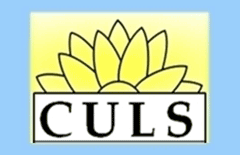Keywords
accessibility, academic libraries, video tutorials, library instruction, disabled students
Abstract
Accessibility of library resources and services in academic libraries is fundamental to serving the discovery and scholarship needs of students and faculty, regardless of disability status. Equitable access in higher education affects student grades and retention, and within the library, involves making library buildings, video tutorials, library instruction, the website, Libguides, and resources accessible to students. Accessibility is vital for disabled students to obtain a college degree. It complies with federal law while improving access to education for all students, such as English as a second language students, undiagnosed disabled students, and students with different learning styles. This article focuses on how using alt text, color contrast analysis, closed captioning, and transcripts can improve the accessibility of library video tutorials, assisting the disabled and non-disabled students alike in their discovery and scholarship.
Creative Commons License

This work is licensed under a Creative Commons Attribution-Noncommercial-No Derivative Works 4.0 License.
Recommended Citation
Pope, Barbara M. and Creed-Dikeogu, Gloria F.
(2022)
"Increasing Accessibility to Academic Library Services with Alt Text, Color Contrast, Captioning, and Transcripts in YouTube Tutorials,"
Kansas Library Association College and University Libraries Section Proceedings:
Vol. 12:
No.
1.
https://doi.org/10.4148/2160-942X.1085
References
2U, Inc. (2020, August) Learning styles: All students are created equally (and differently.). Retrieved June 29, 2022, from https://teach.com/what/teachers-know/learning-styles/
American Library Association. (2001). Library services for people with disabilities policy. Retrieved June 7, 2022, from https://www.ala.org/asgcla/resources/libraryservices
CAST (2018). The UDL Guidelines (Version 2.2.). Retrieved September 21, 2022, from https://udlguidelines.cast.org/
Clossen, A. & Proces, P. (2017). Rating the accessibility of library tutorials from leading research universities. portal: Libraries and the Academy, 17(4), 803-825. https://doi.org/10.1353/pla.2017.0047
Colour Contrast Analyser (2022) (Version 3.1.4) [computer software] Clearwater, Fl: TPGi. Retrieved June 29, 2022, from https://www.tpgi.com/color-contrast-checker
Do-IT. (2021, April 8). What is the difference between open and closed captioning? Retrieved June 29, 2022, from https://www.washington.edu/doit/what-difference-between-open-and-closed-captioning
General Services Administration. (2022, March). Section 508 of the Rehabilitation Act of 1973. Retrieved June 20, 2022, from https://www.section508.gov/manage/laws-and-policies/
Google (2022). Add subtitles and captions. Retrieved June 29, 2022, from https://support.google.com/youtube/answer/2734796
Google (2022). Use automatic captioning. Retrieved June 29, 2022, from https://support.google.com/youtube/answer/6373554?hl=en
Disability. (n.d.). In Merriam-Webster. Retrieved from https://www.merriam-webster.com/dictionary/disability
Mozilla Founation. (2022). What is accessibility. Retrieved from https://developer.mozilla.org/en-US/docs/Learn/Accessibility/What_is_accessibility
National Association of the Deaf. (2022). Captioning key – elements of quality captioning. Retrieved June 29, 2022, from https://dcmp.org/learn/599-captioning-key-elements-of-quality-captioning
National Center for Education Statistics, U.S. Department of Education. (2015-2016). Percentage distribution of students enrolled in postsecondary institutions, by level, disability status, and selected student characteristics. Fast Facts. [Data file] Retrieved from https://nces.ed.gov/fastfacts/display.asp?id=60
National Center for Education Statistics, U.S. Department of Education. (2000). Postsecondary students with disabilities: enrollment, services, and persistence. (NCES 2000-092). Retrieved from https://nces.ed.gov/pubs2000/2000092.pdf
National Center on Accessible Educational Materials. (n.d.) What is accessibility? Retrieved June 7, 2022, from https://aem.cast.org/get-started/defining-accessibility
National Center on Accessible Educational Materials. (n.d.) Designing for accessibility with POUR. Retrieved June 7, 2022, from https://aem.cast.org/create/designing-accessibility-pour
Singleton, K. J., Evmenova, A., Kinas Jerome, M., & Clark, K. (2019). Integrating UDL strategies into the online course development process: instructional designers' perspectives. Online Learning, 23(1), 206-235. https://doi.org/10.24059/olj.v23i1.1407
U.S. Access Board. (n.d.) About the ICT Accessibility 508 Standards and 255 Guidelines. Retrieved September 29, 2022, from https://www.access-board.gov/ict/
U.S. Department of Justice, Civil Rights. (2008) Americans with Disabilities Act, as Amended. Retrieved June 27, 2022, from https://beta.ada.gov/law-and-regs/ada/
U.S. Department of Justice, Civil Rights Division. (2022, March) Guidance on Web Accessibility and the ADA. Retrieved September 29, 2022, from https://beta.ada.gov/resources/web-guidance
W3C. (2018, June 5) Web Content Accessibility Guidelines (WCAG 2.1.) Web Accessibility Initiative. Retrieved from World Wide Web Consortium website: https://www.w3.org/TR/WCAG21/
W3Schools. (2022) HTML Color Picker. Refsnes Data. [data file and codes list]. Retrieved June 29, 2022, from https://www.w3schools.com/colors/colors_picker.asp
Wakimoto, D. K. & Soules, A. (2011). Evaluating accessibility features of tutorial creation software. Library Hi Tech, 29(1), 122-136. https://doi.org/10.1108/07378831111116958
Weeks, T. & Putnam-Davis, J. (2017). Evaluating best practices for video tutorials: A case study. Journal of Library & Information Services in Distance Education, 11(1-2), 183-195. https://doi.org/10.1080/1533290X.2016.1232048
Whitver, S. M. (2020, April). Accessible library instruction in practice. portal: Libraries and the Academy, 20(2), 381-398. https://doi.org/10.1353/pla.2020.0019
Wilcher, S. (2018, September 17). The Rehabilitation Act of 1973: 45 Years of Activism and Progress. Insight into Diversity, Retrieved June 30, 2022, from https://www.insightintodiversity.com/the-rehabilitation-act-of-1973-45-years-of-activism-and-progress/
Included in
Curriculum and Instruction Commons, Educational Methods Commons, Higher Education Commons, Information Literacy Commons, Instructional Media Design Commons, Scholarly Publishing Commons


